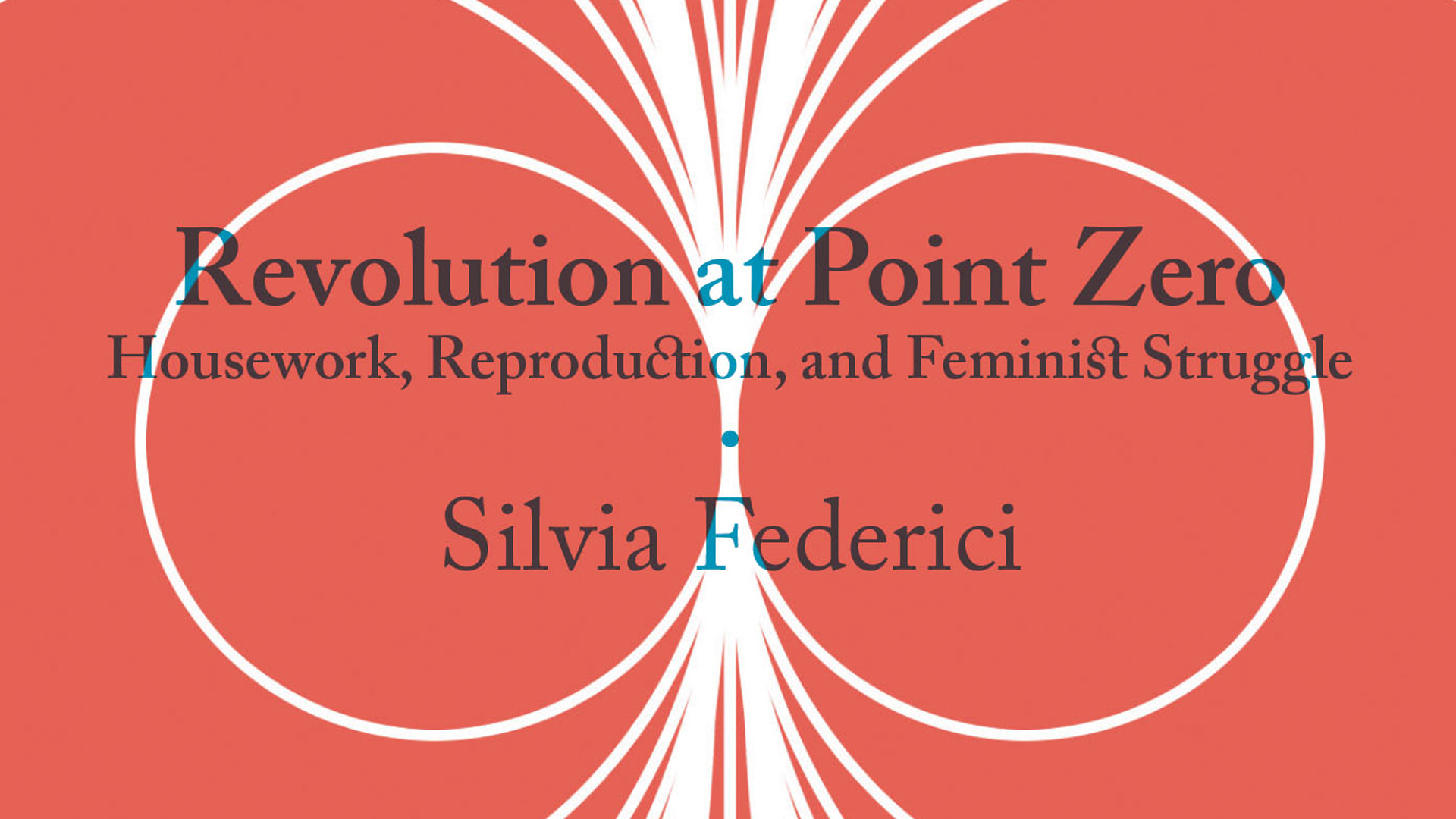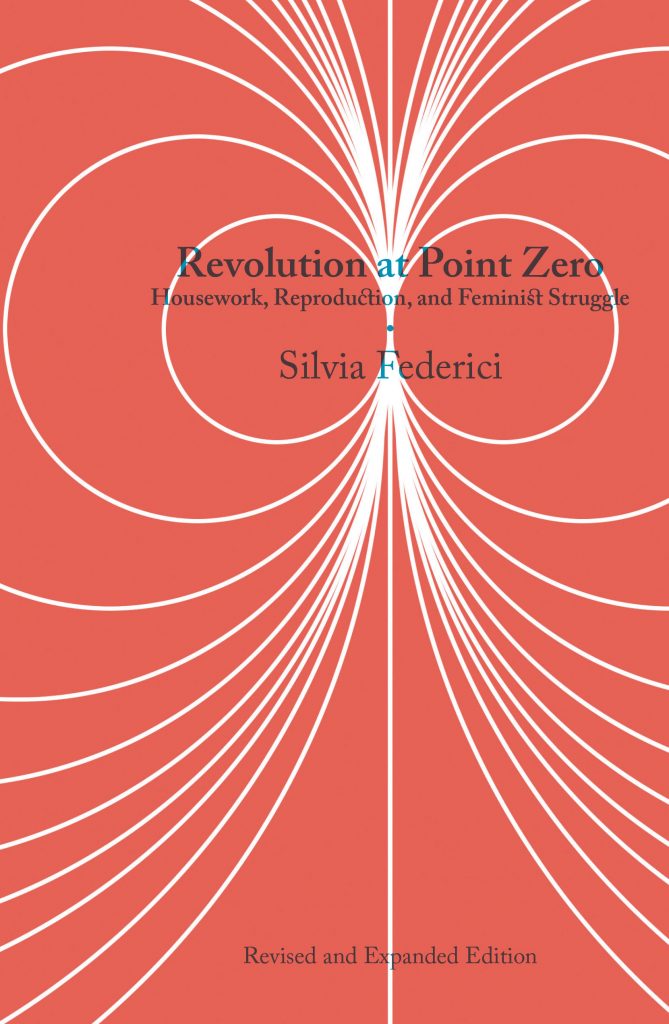
All photos: Luis Nieto Dickens
by Hanna Hurr
Mask Magazine
August 2016
What is the deal with that book about the witch hunts, though?
¶ Hanna Hurr sits down with Silvia Federici, the mother of materialist
feminism and author of Caliban and the Witch, to discuss the lessons
we still have to learn from Wages for Housework and other organizing
around reproductive labor.
Twelve years have passed since Silvia Federici’s Caliban and the Witch was published, and even though feminism is experiencing a prime time renaissance, the distance between rosy endorsements of Hillary’s glass-ceiling breaking and the anti-capitalist, anti-imperial position Federici and others advanced decades ago feels galactic. I spent an evening with Federici to discuss the unrealized vision and legacy of the feminist movement of the 70s, and how her theories of reproductive labor remain relevant to this day.
Every morning, Silvia Federici wakes up to run in the park. Perhaps this explains why she, at the age of 74, is more up to speed than most in her generation. “I just read this article about someone who died while playing Pokemon Go,” she tells me as she welcomes me into her living room. “I hear it’s causing all sorts of problems.” This is the woman who inspired a generation of millennial feminists to think about how women have been treated by the economy since the Middle Ages. It’s not surprising that she’s still watching closely.
I don’t know how many copies Autonomedia has sold of Federici’s treasured book Caliban and the Witch: Women, the Body and Primitive Accumulation, but I doubt that would give even a remote estimate of how many have read it. I’ve seen xeroxed copies stacked in infoshops, PDFs shared online, earmarked copies read out loud during road trips and passed among friends like a secret, sacred text. Many know it simply as ‘the book about the witch hunts,’ and this might make its lasting significance seem perplexing. But it’s not just about the witch hunts. Rather, it’s a historic overview of how capitalism emerged and spread.
Here is the short version: Federici agrees with Marx that the spread of capitalism could not have happened without hundreds of years of brutal violence and disciplining of rebellious bodies. However, she expands his argument and shows how we are witnessing an ongoing accumulation of labor-power and potential-labor-power, the process that was required to produce the submissive capitalist subject of today. She also argues that capitalism sustains itself and continues to grow though a permanent primitive accumulation (the process that, according to Marx, created the conditions for the development of the capitalist system). Primitive accumulation, involving the dispossession of millions of people from their means of subsistence, is not just something that happened once, a long time ago. It’s something that is still taking place today, constantly. She proposes that this also includes and is made possible through the production of difference – hierarchies built upon gender, “race,” and age, that separate, divide people, domesticating some and marginalizing others in order to produce a continuous supply of new workers, enclose more land, and create ever-evolving forms of exploitation.

“I think I was already a feminist at ten years old,” Silvia Federici tells me with a smirk, adding that, when she was a teenager, her family moved to a town with a communist administration and she grew up in a fairly “anticlerical” environment. There were other factors. Her father was a philosophy teacher who also taught history, and would share with her stories about how the popes used to lead armies, how the spirit of religion lived more in the heresies than in the church, how people rebelled against the oppression by the church. It was from her father that she first learned about the history of the heretic movement, which she later wrote about in Caliban and the Witch. “He was the one who told me that the heretics were the real church.”
Like many others like her, Federici’s mother was a fulltime housewife. As a child, Silvia says she dreaded the traditional fate of women; she resisted doing housework and would struggle with her sister about who would clean up or do the dishes. “It was made clear to me from an early age that there was a difference between being a man and being a woman, and that as a girl I would not be allowed to do all kinds of things. I didn’t want to be a housewife because I understood that this was a position with no social power. I spent years wanting to be a man and had no desire for femininity. The last thing I wanted was to be like my mother.” The irony doesn’t escape her: the fear of succumbing to her mother’s lot, in a way, inspired her to become a radical feminist preoccupied with the political nature of housework.
At first I hesitate to ask Federici about her relationship to her mother because it seems so cliché, but throughout our conversation Federici speaks candidly and fondly about her mother. When I ask if her introduction to radical feminism furthered this gap between them, she gives me a firm no: “The opposite happened. Feminism introduced me to a whole new reflection on housework and power relations, what the devaluation of women’s work meant on an individual and collective level, and it made me rethink my relation to my mother. I felt very bad having been so unappreciative of her, so I started going home more and wanting to do the housework. This began a transformation in my relationship with my mother; it brought us closer together.”

Federici moved to the United States in 1967 to start a PhD program at the University of Buffalo, and it was only a matter of time before her paths started crossing with early second-wave feminist circles in New York.
As Jo Freeman explains, young women found each other at socialist, anti-racist, and anti-imperialist gatherings and actions throughout the 60s, and formed groups of their own when their sexist so-called peers refused to take them seriously. The first groups formed spontaneously in Chicago and Seattle in ‘67 and ‘68. Over the next couple of years, word spreads to people across the country, including Federici. “Feminism as a movement really takes off in the summer and fall of ’69, after the famous SDS conference in Chicago, which also birthed the Weathermen. A number of women left the conference and began to caucus on their own. I was in Italy at the time – I used to go back for my summer vacation – and when I returned in September, there was a women’s movement. That fall I heard the first feminist critiques and read the first feminist manifestos, and I didn’t need any convincing.”
This experience of finding something new that resonates so strongly it becomes instantly familiar, it’s something that I and many people who’ve gone through some kind of politicization can relate to. When I ask her what it felt like, her awakening into feminism, she describes it as a series of “emotional turning points,” one of which was being in a room, in New York, full of hundreds of women. “Up until that point I had never been in a room with so many women. For young women today it would not be something so emotional, because you’re used to seeing women together. But we were not. We came from a world in which women coupled with men. You had moments of being together with your girlfriend but that was child’s play. We used to call it l’amica del cuore, the friend of the heart, your girlfriend. The world of women was a devalued world, a world that sooner or later you were expected to leave, when you found the man of your life.”
The feminist movement would go on to highlight this world, the world of housework, the family and child rearing, as foundational to capitalism, and it’s interesting that Federici describes a parallel personal shift in attention: re-discovering personal relationships with other women as something powerful, valuable, and political. “To be in a room of 400 women for the first time was thrilling. We were all very excited about each other and soon we became uninterested in men. I remember looking around and feeling shaken up inside. It felt like a revolution.”
As she describes this, I see my life flash before me; a series of intimate moments with girlfriends during my childhood, teens, early adulthood, mixed with lonely moments of trying to prove myself to the world, the world of men, and re-discovering in the second half of my twenties how powerful these relationships can be. It has taught me tenderness and care and thoughtfulness and solidarity and kindness. And yet, hearing Silvia Federici talk about all-women spaces, I become nervous. It is almost taboo now to express feeling this kind of excitement, and for valid reasons – some feminist groups excluded trans women, and transmisogyny is still as real as ever. The ease with which cis women could find solace in sharing space continues to afford us a lazy excuse to exclude trans women and others marginalized by patriarchy. All of this is complicated, although I totally understand and in 2016 can still relate to what she is talking about. The first and only time I met with a psychologist, she told me to pay attention to the feelings that made my throat thick and my eyes filled with tears, that ‘behind that resistance lies something complicated and real and meaningful worth sitting with.’ This isn’t a perfect feeling.
Silvia Federici has often cited Mariarosa Dalla Costa’s article “Women and the Subversion of the Community” as the text that instigated the development of her historical and theoretical positions on capitalism, exploitation, and reproduction. “I was already coming from a Left background, but reading Mariarosa Dalla Costa’s article made me understand what feminism meant in terms of class politics. All kinds of things began to fall into place, I began to see new constructions.” It’s easy to see the influence of Dalla Costa in her work: the text describes the centrality of reproductive labor to capitalism – from unwaged housework and the role the education system plays in reproducing society. She emphasized the housewife’s isolation and dependence on men as core mechanisms by which capitalism is maintained, and put forth the still controversial position that the home is a central place of struggle: “The role of housewife, behind whose isolation is hidden social labour, must be destroyed.”
Together with Mariarosa Dalla Costa and Selma James, Federici founded the International Feminist Collective, which started the Wages for Housework campaign in 1972. Federici went on to start Wages for Housework groups in Brooklyn and around the US. In 1975, Federici published the texts “Wages against Housework” and “Why Sexuality is Work,” which articulated the group’s central ideas: capitalism depends on the unwaged reproductive labor of the housewife – to give birth to new workers, feed and clothe them, and provide emotional support and stability in times of need and crisis. If housewives were to refuse to do this work, capitalism would be on the brink of collapse.
Forty years later, the idea that capitalism originates and should be fought from the kitchen may seem less pertinent. After all, how many housewives do you know, and doesn’t capitalism seem to be thriving? But the Wages for Housework campaign wasn’t only striving for ‘wages for housework’ as a main goal. Inspired by the Italian operaismo movement, as well as by the anti-colonial struggle, they used the wage as a strategy to shed light on how many functions of society were done in the isolation and invisibility of the home, disregarded as ‘unproductive,’ and how many wageless workers have actually contributed to the accumulation of capitalist wealth. As Dayna Tortorici wrote of Federici in More Smiles? More Money, “by recasting all the social activities women perform as ‘work,’ Federici economizes them to the point of logical extremity. The point isn’t actually to put a price on perfunctory marital sex, or to max out categories of value so that their utility disintegrates; it’s to illuminate how supposedly non-capitalist activities shore up the economic system that structures and controls so much of our lives.” In fact, it’s impossible to quantify the economic impact the household has played historically in absorbing crises of capital and helping the economy bounce back. When someone loses their job, when a worker suddenly falls sick, when the police fuck somebody up, when the economy becomes increasingly precarious leaving people depressed and hopeless, it is usually mommies and households that patch people up, give people a place to rest and recover, provides an outlet for anger and distress – whether it’s through food, space, love and emotional support, healthcare, or sex.
While a lot has changed in terms of what opportunities exist for women, this is only true in some parts of the world and some sectors of society. Regardless, it is still true that capitalism relies on countless forms of un(der)paid reproductive labor, and many would be surprised to learn that the ways we talk about our conditions today were already described by the Wages for Housework campaign. From describing affective labor as labor, while criticizing the labor movement for reinforcing our dependence on wage labor, to calling for reparations for slavery and supporting welfare women’s struggles, many of the things we talk about on Twitter today as if they were new revelations, Federici and her peers analyzed and organized around already in the 70s.
Federici saw the feminist movement take off in New York firsthand. By 1975, it had grown into a mass movement. When I ask her what it was like to be part of this, she lights up. “You could really see it in the streets. On March 8, there would be thousands of women out protesting. It was very powerful, and it wasn’t just white. I remember in particular: International Women’s Day in 1971. After the big march we went to Union Square. There was this huge podium, and on the podium there were three women. One from the Young Lords, one from the Black Panthers, and one from the Witches. The energy was amazing.”
As the movement grew larger and louder, its energies began to be seized from all directions. During the second half of the 70s, there was a strong pull to form a women’s labor movement, something Federici criticized — not because there was anything wrong organizing around women working outside the home, but because it concentrated all feminist energies around waged labor, operating on the assumption that working outside the home was the road to ‘women’s emancipation.’ “To me it was a limitation, not because it was wrong to go towards the labor movement, but because increasingly all kinds of struggles over reproduction were abandoned. In fact, two years later, in 1976, when the issue of maternity leave went to the Supreme Court, the feminist movement did not fully support it. It was feared that if we started calling for such ‘privileges’ we would not be entitled to fight for political equality and for equal pay for comparable work. The same happened around welfare – when welfare women started being attacked, there was no feminist mobilization to counter it, which was a terrible mistake.”
The second major takeover came from institutions like the United Nations and the US government. “By the 70s, the feminist movement was very much taken over. That was an important turn that has not been understood enough in terms of its historical implications. The UN presented itself as the sponsor of the emancipation of women, calling, in 1975, the first World Conference on Women in Mexico City.”
When I ask her to explain what happened and why, she looks at me for a second, as if not sure how to convey the full extent of this massively important moment: “The UN intervened in the women’s movement in many ways and it would take the whole evening to talk about it in detail.” To summarize, she says, there were two main reasons for this increasing institutional attention being paid to the women’s movement. “First, there was the realization that a certain type of deal was over. Women would no longer accept being subservient to men and to relate to the state and to capital though the mediation of men. The UN intervention in feminist politics expressed the realization that from now on capital would have to deal directly with women, and also that women’s demand for autonomy, if properly domesticated, cleaned up and channeled, could be used to re-launch an economy that was in crisis. More specifically, women’s demand for autonomy, for a wage of their own could be used to address the labor crisis that capital was facing in the 70s. Profit rates were collapsing, anti-colonial struggles were taking place in many parts of the world, here and in Europe they had blue-collar workers’ revolts. Now, suddenly they had all these women demanding the right to work, demanding to enter the waged labor force… All of these forces worked together so that the doors of many workplaces could be opened to women. I have no qualms to say that the entrance of women on a mass level into the waged workforce was one of the factors that helped overcome the labor crisis. I say ‘on a mass level’ because black women always had to work outside the home, as they could nor rely on a steady male wage.”
Perhaps Federici stresses this period because it captures why making demands primarily around waged labor and reforms is a strategy that will only produce short-term gains and most likely longer-term setbacks. Since the 70s, the so-called “feminization of labor” has allowed mostly middle-class white cis women to climb the ranks in business and politics, become managers and CEOs and soon, perhaps even the president. Of course, wages are still unequal, the labor market is still sexist. But mostly, the increased “equality” between certain classes of men and women in the Western world has coincided with new groups of people being locked into positions of underpaid reproductive labor, producing a new international division of reproductive labor with children and elders being cared for, houses cleaned, clothes made, food prepared by people of color, recent immigrants, and non-college-educated millennials.
“They did exactly the same thing with the anticolonial movement a decade earlier: when they realized the anticolonial struggle could not be defeated the United Nations went in and took it over, posing as the leader of the decolonization process. Some people got killed, like Lumumba, others were selectively chosen and installed. You can say that the UN made sure that decolonization would take place in a way that didn’t shake the boat, that firmly reasserted the interests of international capital. This is why we used to speak of Neo-colonialism, because the colonial bond was never broken up. Except now it was reasserted with a more indigenous ruling class.
The UN’s intervention into the anticolonial movement happened first, and by the time the UN did the same thing with the women’s movement they had a tested practice. They created a new class of ‘global’ feminists, going here and there to international institutional gatherings, where they spent nights debating over the wordings of documents. They created new agendas that appropriated the feminist language but discarded its subversive content. For example, UN literature speaks of violence against women but does not tell us how that violence is created, what are the social forces responsible for it.”
The UN Fourth World Conference on Women in Beijing in 1995, she said, was a final blow. “All of a sudden every feminist was going to Beijing and it seemed that this was the place where you had to be to function in the feminist movement. It was said that there you would meet women from Africa and all over the world. Very good! But, I was thinking that the Zapatistas had an amazing encounter up in the mountains of Chiapas that also brought together people from all over the world, and these were poor indigenous peasants, they were not the UN. Yet, they were able to pull it off, so why not us? My contention has always been that the women’s movement could’ve done that, and didn’t need the UN to build international solidarity.”
In the 80s, Federici worked as a teacher in Nigeria just as the Structural Adjustment Programs were being introduced across Africa, and it was this experience that inspired her to write Caliban and the Witch. She had co-authored a book on the impact of the transition to capitalism on the process of reproduction together with Leopoldina Fortunati in 1984, but while living in Nigeria she observed firsthand the same process that happened in Europe in the early days of capitalism take place all over again – land privatization, the disruption of local economies an communitarian regimes, the destruction of resources sustaining communal life. But she also realized that many people still see their lives as, she writes, “radically antagonistic to the requirements of capitalist production.” Being reminded of how crucial women have been to the resistance against wage labor and enclosures, she decided to revisit the research they had started 20 years earlier, and study the transition from feudalism to capitalism and the process that Marx calls ‘originary accumulation.’
It’s easy to see that then, as well as now, Federici’s focus was never on the woman primarily; her focus was on understanding the economic forces and institutional mechanisms that together produced the woman as housewife working to reproduce labor power for capital: to guarantee the quantity and quality of labor. When she describes the decades-long cooptation of the feminist movement as “a big heartbreak,” I can only imagine the loss she is describing. If you ask her, the feminist movement – the one that was interested in fighting capitalism – was reduced to silence.
A further concern for her is today’s frequent claim that the feminist movement she was part of, the so-called “second wave,” has lost its relevance.
“Today, intersectionality is treated as a new discovery. For me it’s not, it was already present in our analysis. Selma James’ Sex, Race and Class analyzed the relationship between racial exploitation and sexual exploitation, the kinds of hierarchies and ideologies capitalism had to construct to hide and naturalize particular forms of labor exploitation. The continuity between the enslavement of African people and the devaluation of women’s labor and social position has always been there. We analyzed the material basis for them.
I find it difficult to accept that the so-called second wave of feminism of the 70s was completely oblivious to this. The women’s movement grew in the wake of the Civil Rights Movement and ‘Black Power’ and was affected by it, as the first feminists in the 19th century were affected by the abolitionist struggle. What is true is that the feminism of the 70s as a whole did not have enough of a class politics, and did not have anti-racist politics. But there were groups, like ours, whose work recognized the continuity between racism and sexism. There were many strains within the women’s movement.”
So, when Federici expresses impatience with a politics focused on identities, her frustration is directed at the failure to locate the source of the multiple forms of oppression we are dealing with. To her, capitalism is still growing stronger by the same mechanisms as it did when she entered the scene, which is why waging struggle from her position as a woman is still important for her.
“Since the beginning of capitalism, women have fought to change what it means to be a woman. To me ‘woman’ always meant particular forms of exploitation, particular places in the division of labor, and particular histories of struggle. Clearly there are crucial diversities among women. There are hierarchies, inequalities especially along the line of race and age. But there are also common grounds, though I draw a line, as I don’t see women in the capitalist class as my ‘sisters.’ That’s why I don’t want to give up the category ‘woman.’ It is not a biological category, it’s a socio-political and historical category. If you cannot name your condition, then you can’t make certain kinds of struggle. When I think of ‘woman’, I place myself in a history and in particular forms of struggle that women across the world are continuing to this day.”
One thing is for sure: Federici’s argument that capitalism works by harnessing reproductive labor, and producing difference and above all hierarchies to fix certain identities to this specific kind of labor is no less relevant today than it was in the 70s and 80s. We now face the reality that robots are replacing large groups of workers – from service workers and manual laborers to care workers and teachers – while the creative labor that humans do is unaccounted for. At the same time, services like childcare and healthcare are increasingly privatized, leaving a growing poor population with no access to those kinds of services and having to make up for it by working double or not at all. Services like Facebook appear to meet the need for more connection and emotional attachment, but the emotional labor is still done largely by the same groups of people as before, while making the labor aspect of it even more obscure.

Federici is no longer teaching, but this does not seem to have slowed her down. She is still writing and speaking, and when we met she has just returned from a trip to Sweden, where she participated in the conference Expansions on Homecraft. The walls of her living room are filled with books, and on one side of the room stands a large fold-out table, on top of which sits her 11-inch MacBook Air. It looks like she was in the middle of something when I showed up. As we wait for our photographer Luis Nieto Dickens to arrive to take photos of her, I ask her what her days are like.
“Every morning I get up and go running in the park. Then I work. I’m currently working on two manuscripts. One is an anthology of the materials that we produced in the New York Wages for Housework committee.” She pulls up the cover on her computer and it’s a red illustration from one of the Wages for Housework campaigns. “The other is a book on the commons. I also have this long term project that I don’t know if I’ll ever finish that is about children under capitalism, which was a kind of upshot from Caliban and the Witch. The last few years I’ve done a lot of traveling, which I normally don’t do. I also get a lot of emails, which is good but also very disrupting. I’m struggling with that now, trying to figure out how to deal with it. I don’t like not reading it, I don’t like to not respond. Otherwise, I do housework and go to meetings. I sometimes go to Mayday [Space], Woodbine, Bluestockings, and similar places. We have a big social life, George [Caffentzis] and I. Very often we’re like ten people here having dinner together in this living room. The rest of the time I write and read.”
Luis texts me that he’s outside, so I run down the three flights of stairs to let him in. We apologize to the doorman who seems completely unsurprised that these queer-looking young people are running up and down the stairs to visit Silvia. Back inside, Luis pulls out his camera and begins snapping photos, and Silvia graciously plays along, poses for the camera and follows our cues.
Between meeting Silvia Federici and writing this, I’ve reread all of Federici’s books, and felt the presence of her work everywhere – from news articles about police shootings to Twitter rambles about emotional labor. On August first, I heard that Korryn Gaines had been killed by Baltimore police, and I stayed up late watching YouTube videos of her previous interactions with the police. I have no doubt Korryn Gaines was shot specifically because she refused to participate in a system that depended on her cooperation. Her body was crossed twice by difference: a black person’s refusal to be expelled or colonized is a crime against the accumulation of bodies as labor-power; a woman’s refusal to domesticate her children is a crime against the accumulation of the capacity to produce life. Hers were crimes against the whole regime. It reminded me once again of why Federici’s work is still so valuable today. Her writing offers historic continuity to our shared discontent; it flips the “normalcy” of this world on its head, saying: resisting capitalism and patriarchy and racism and colonialism make complete sense, together and all at once.

Hanna Hurr is the Managing Editor of Mask Magazine.
Buy Witches, Witch-Hunting, and Women
Buy Re-enchanting the World: Feminism and the Politics of the Commons
Buy Revolution at Point Zero: Housework, Reproduction, and Feminist Struggle







